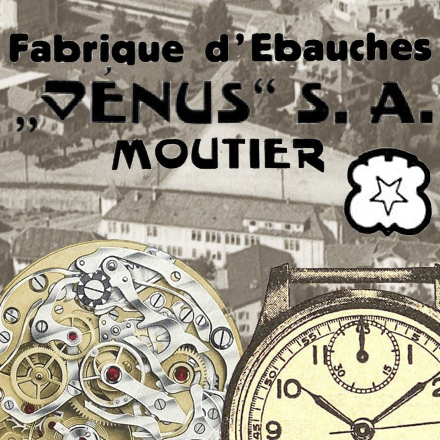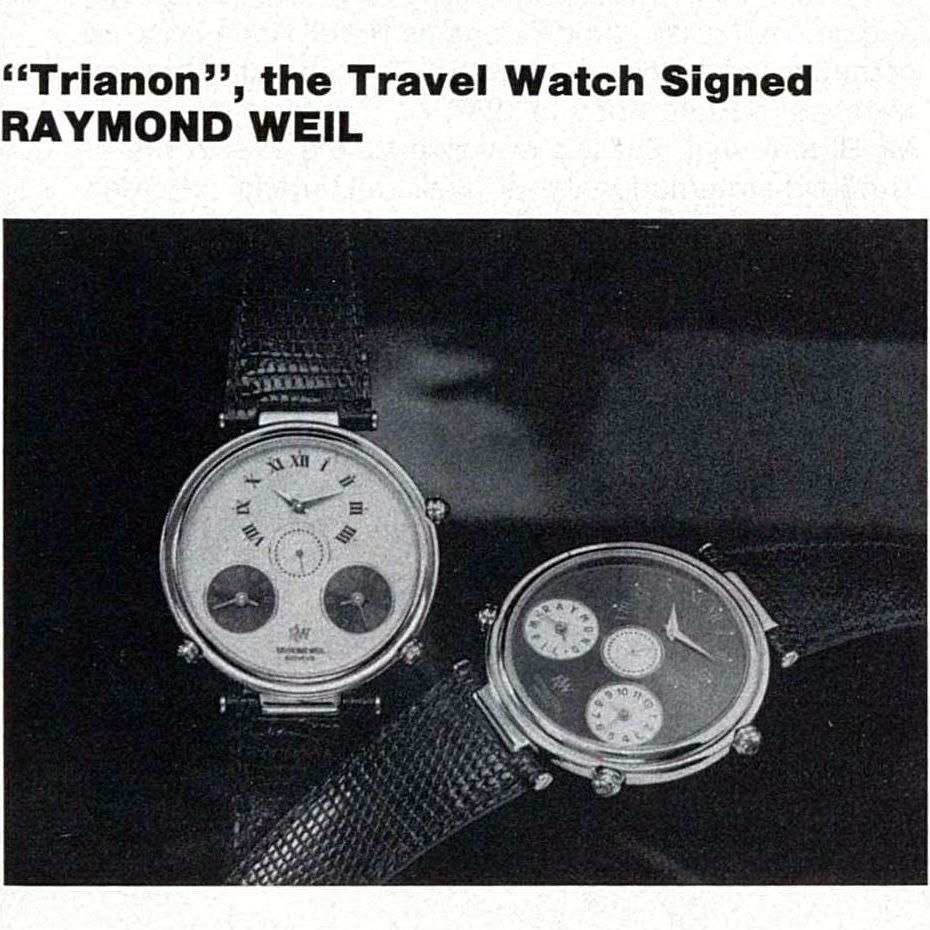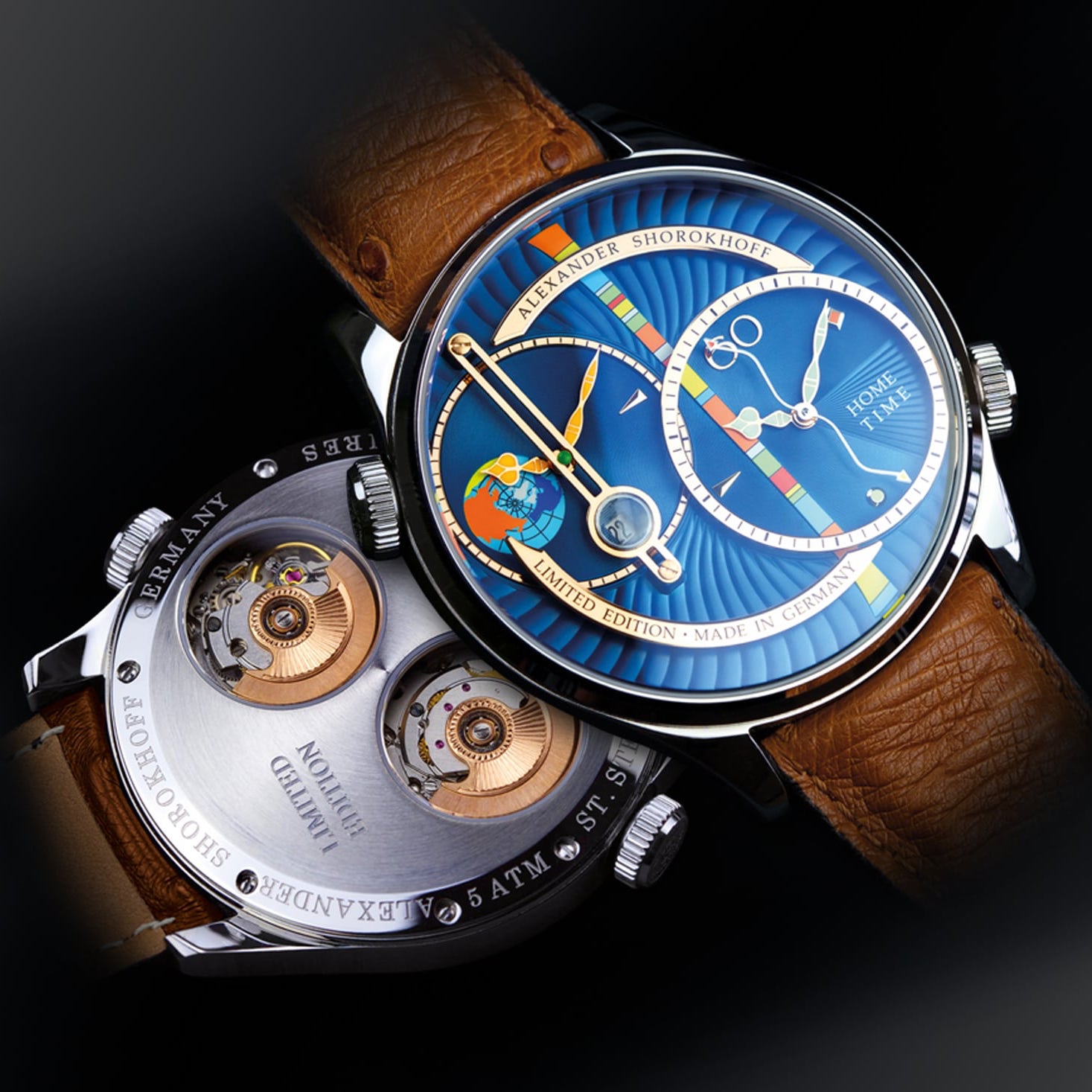Yesterday I talked about the Nappey Jumelles Times, the first dual timezone watch to use two separate movements in a single case. Although that model was quite obscure, today’s watch is much more famous. Ardath embraced Nappey’s formula, producing a line of Long Distance watches that lasted a decade, including special models for Muslims and homemakers, and a cool sports model that reappeared in the 1990s!
My “Two Movements, One Case” Series
1962 Ardath Long Distance
Today, we take time zones for granted. In our connected world, we frequently work with people on other continents and adjust for different time zones. But in 1962 this was a novel concept. So novel, in fact, that Europa Star ran a two-page article discussing the basics of time zones while introducing Ardath‘s new Long Distance dual-timezone model. Watch buyers at the time needed to be advised that, “East of Greenwich, twelve adjoining zones have been established, each one an hour ahead of the next in time.”

Introduced in 1962, Long Distance was clearly inspired by the Nappey Jumelles Times, which had appeared two years earlier. From the start, Ardath positioned Long Distance as a new brand, not just a single model. It included a special logo, featuring a triskelion to symbolize motion. Variations on this theme would be used for most Long Distance models, though it evolved to be a shield and full coat of arms. Eventually, the triskelion would be used on other Ardath models, from 1965 into the 1970s.
The initial Long Distance model is quite similar to the Jumelles Times. It is an oversized watch with simple faceted lugs and a flat bezel. Ardath was more clever than Nappey, using tall rectangular markers on oval subdials to take up some of the excess dial real estate. They also label the dials as “home time” and “local time” and add a date complication to the former. The result is an aesthetically pleasing watch that has retained some level of interest with modern collectors.
The original Ardath Long Distance was equipped with both an automatic and hand-winding movement. The left side of the dial (“home time”) was powered by ETA’s new automatic Cal. 2551, a round 7.75”’ movement with date. The right side (“local time”) used the hand-winding Fleurier Watch Company Cal. FEF 430, a simple tonneau-shaped 5”’ movement. The ETA movement ran at 21,600 A/h while the Fleurier ran at 18,000 A/h. This must have caused issues due to resonance inside the case, especially given the large balance wheel of the ETA.
Ardath recommended the watch to pilots, using the “home time” side to show GMT. With “local time” being hand-wound, it is likely that it would stop during regular use.
The ETA also used a smaller crown than the FEF, perhaps to differentiate home and away time. Ardath counted this as “34 jewels” on the dial, though of course this was the combined number of two 17-jewel movements!
The Long Distance, Ref. 14161, was available with yellow or pink gold plating or “white profectus” steel. Most models used a leather strap, but steel bracelets were also available, including an elegant “beads of rice” bracelet seen in a 1968 advertisement.
1964 Ardath Wisdom
In 1964, Ardath showed a new version of the Long Distance on the stand in Geneva. The Ardath Wisdom was specially designed for “people of the Moslem religion” to “enable them to observe the time for prayer in one of the dials, during the period of Ramadan.” This model was essentially identical to the existing Long Distance, though it used twisted lugs, a wider bezel, and slightly different markings. One notable difference is the Ardath logo, which is simplified to the letter “A” on the Wisdom rather than using the Triskelion arms.

Image: The Eastern Jeweller & Watchmaker (Europa Star) 89, 1965
The Wisdom model pictured above, from the 1965 catalog, has Arabic numerals at 12 and 6, but most examples seen have large rectangular markers like the Long Distance at all hours on both dials. The Wisdom also appears to have smaller crowns in the image above, though most examples seen today have ordinary large crowns on both sides.
1968 Ardath Super Long Distance

In 1968, Ardath introduced a novel new Long Distance model. The Super Long Distance, Ref. 14311, featured two automatic movements in an unusual rectangular case. The movements were likely the same ETA Cal. 2551 used previously, judging from the overhanging winding gear. Each movement had its own separate dial, an important development in watch design that looks contemporary even today. Indeed, this model would be reproduced in 1992 and appeared fresh at that time.
The Super Long Distance placed the “local time” dial at the top, with Arabic numerals at 6, 9, and 12 and date window at 3. The “home time” dial was below, with Roman numerals and another date window. By placing one movement above the other, both crowns are on the traditional side, making the unusual watch more familiar in use.
Since both movements are automatic, this would be a much more friendly watch to wear on a daily basis. But it was incredibly large, even by today’s standards: Just 20 mm across, it measures over 55 mm across the wrist, with hidden lugs and a curved case doing little to disguise the bulk. It must have looked completely alien in 1968, more like a prop from Star Trek than a daily-wear watch!

1973 Ardath Hostess Long Distance
In 1973, Ardath added a ladies model to the Long Distance line. The new Hostess Long Distance has the same “lateral” dial orientation as the Super Long Distance, but the twin dials are separated, with separate square bezels on a flat oval middle case. Smaller movements are also used, with no date. Together, these changes make a much more wearable ladies watch.


There is no direct indication which dial is intended for home or local time, and Ardath’s advertising can’t seem to decide. One suggests that “local time = black” while another says “black dial for home time”! Of course, it really doesn’t matter which is which.
A second Hostess model was produced as well. The Hostess Silver Memories version used a solid central bar with one dial on each side. This involved rotating one movement, with the dial on the left side, but results in an interesting alternative look.
Both Hostess models remain incredibly rare. I could find no other mention of either model on the Internet!
1992 Ardath Super Long Distance Re-Edition
Ardath let the Long Distance line lapse through the 1970s, though quite a few other brands produced similar watches. Royce was most successful with the Twin, but Antima, Fortis, Orfina, Tourist, and Wittnauer also had similar watches. Even upscale brands like Chopard and Vacheron Constantin produced dual-movement watches in the 1970s.
Ardath suffered through the mid 1970s before pivoting to focus on fashionable quartz models. The brand returned somewhat in the 1980s with new models and novel materials, focused on jewelry watches and other luxury quartz pieces. They even celebrated 50 years with a “Pythagore” line. Their final appearance at the Basel fair was 1993.
Just before the end, Ardath resurrected the Long Distance model. As seen in the Europa Star feature below, the new Super Long Distance was simply a reissue of the original from 1968. The dials are similar and the case appears identical. The movement was likely updated, perhaps to the ETA Cal. 2651 which replaced Cal. 2551 and remains in production to this day. This Super Long Distance is sometimes seen at auction today, though it is sometimes confused for the 1960s original!

Image: The Eastern Jeweller & Watchmaker (Europa Star) 247, 1992
The Grail Watch Perspective: Ardath Long Distance
Although not the first company to produce a dual-movement, dual-dial, dual-timezone watch, Ardath was the first to realize the potential of this concept. From the Wisdom (perhaps the first watch specifically created for the world’s followers of Islam) to the clever Hostess models to the prescient Super Long Distance, Ardath blazed the trail. Indeed, the chunky double-dial model looks right at home in today’s haute horlogerie landscape, despite the fact that the implementation is anything but “haute!”








Hi Stephen, amazing work! how can i get in touch with you?
It’s for a project i’m working on that may be of interest for you.
Thank you,
C